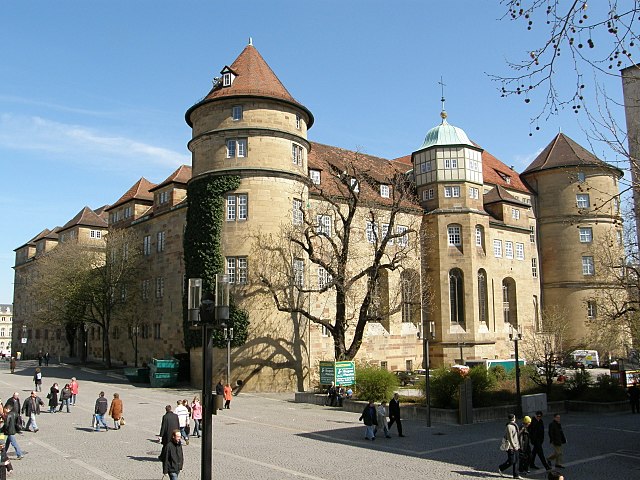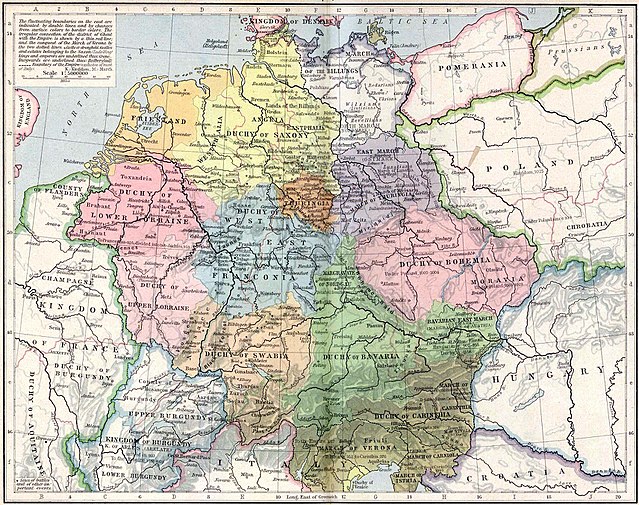History of Baden-Württemberg
The history of Baden-Württemberg covers the area included in the historical state of Baden, the former Prussian Hohenzollern, and Württemberg, part of the region of Swabia since the 9th century.
Old Castle (Stuttgart)
The former Württemberg Castle in an 18th-century print
Arms of the counts of Württemberg
Christoph I of Baden, by Hans Baldung Grien, 1515
A stem duchy was a constituent duchy of the Kingdom of Germany at the time of the extinction of the Carolingian dynasty and through the transitional period leading to the formation of the Ottonian Empire. The Carolingians had dissolved the original tribal duchies of the Empire in the 8th century. As the Carolingian Empire declined, the old tribal areas assumed new identities. The five stem duchies were
Bavaria, Franconia, Lotharingia (Lorraine), Saxony and Swabia (Alemannia). The Salian emperors retained the stem duchies as the major divisions of Germany, but the stem duchies became increasingly obsolete during the early high-medieval period under the Hohenstaufen, and Frederick Barbarossa finally abolished them in 1180 in favour of more numerous territorial duchies.
The Eastern Frankish Kingdom (919–1125) with the later stem duchies: Saxony in yellow, Franconia in blue, Bavaria in green, Swabia in light orange, and Lotharingia in pink





